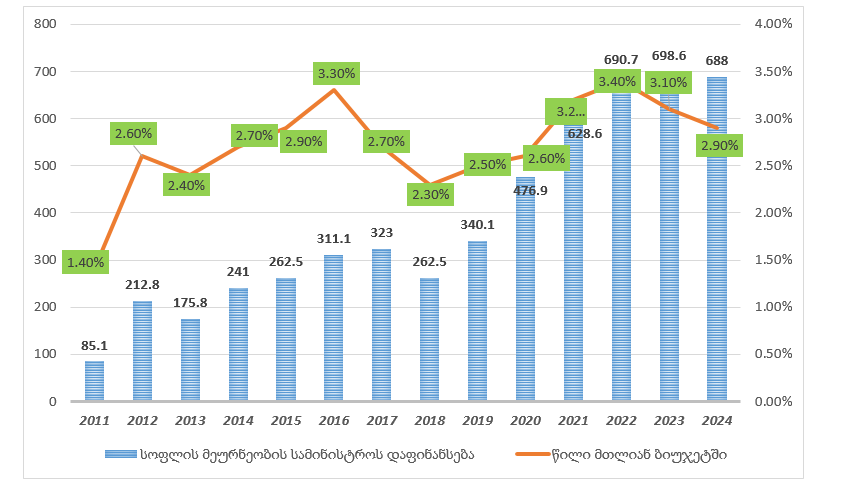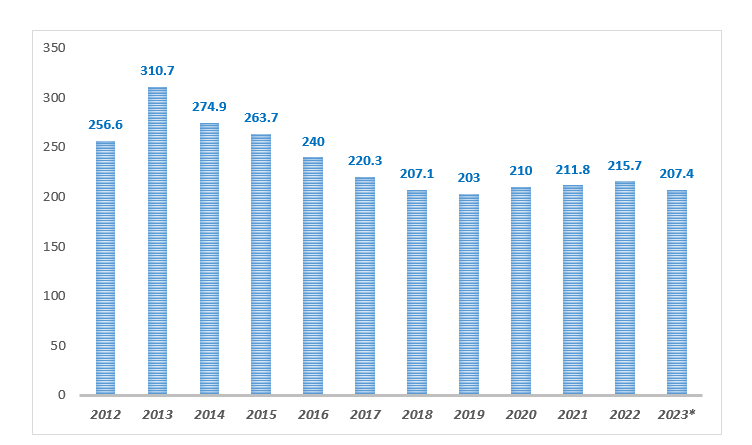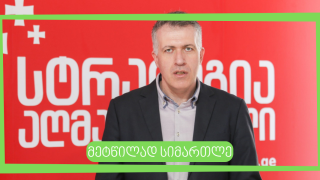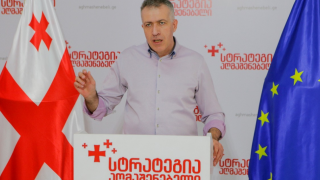Sergo Chikhladze: “Agriculture stood out as a priority with over 4 billion invested. Yet, what did we get? Cultivated land plots have diminished and the workforce has reduced by 60,000 employed individuals.”
Verdict: FactCheck concludes that Sergo Chikhladze’s statement is MOSTLY TRUE.
Financing for the Ministry of Agriculture exceeded GEL 5 billion in the analysis timeframe. However, it is noteworthy that the Ministry of Environmental Protection merged with the Ministry of Agriculture in 2018, thus the 2019-2024 budget is a consolidation of these two institutions. Despite increased investments, cultivated land plots have consistently declined since 2014 with a slight uptick observed in 2020-2022 just to witness a decline again according to preliminary data from the previous year. Employment in the sector has indeed decreased by 60,000 in 2022 as compared to 2017. It is crucial to acknowledge that the employment ratio in agriculture, as compared to overall employment, remains considerably lower in developed economies. Thus, the reduction should not inherently be viewed solely as a negative factor; rather, it underscored the obstacle of this sector’s proportion to the entire workforce, highlighting agriculture’s persistently lower productivity despite high employment rates.
The author also addresses the average monthly income of households from selling agricultural products. Whilst the stated figure is factually inaccurate, the underlying context that income is generally low in the agriculture sector holds true.
The statement lacks acknowledgement of real growth and the agriculture-to-GDP ratio, both of which are essential metrics for accurately evaluating the progress of the agricultural sector.
Having analysed the relevant data, FactCheck concludes that Sergo Chikhladze’s statement is MOSTLY TRUE.
Analysis
Sergo Chikhladze, a member of the political committee of the Strategy Aghmashenebeli political party talked about agriculture during his visit to the TV Pirveli show Dghis Stumari (Guest of the Day) and stated: “Agriculture stood out as a priority with over 4 billion invested. Yet, what did we get? Cultivated land plots have diminished. The workforce has reduced by 60,000 employed individuals and households categorised as self-employed are only selling products worth GEL 89 per month.”
Investment in agriculture started to grow in 2012. The Ministry of Agriculture’s financing, which amounted to GEL 85.1 million in 2011, experienced a significant surge in 2012, reaching GEL 212.8 million – constituting 2.6% of the entire budget allocations, a considerable rise from the previous year’s 1.4%. Whilst the Ministry’s nominal budget steadily increased in the following years until 2018, a proportional trend was not consistently observed in proportion to the entire budget. However, the nominal budget has demonstrated a consistent upward trend since 2018 with its proportion also increasing until the current year.
Graph 1: Ministry of Agriculture’s Budget (GEL million)

Source: Ministry of Finance
The consolidated budget of the Ministry of Agriculture surpassed GEL 5 million in the analysis timeframe. However, it is noteworthy that the Ministry of Environmental Protection merged with the Ministry of Agriculture in 2018, thus the 2019-2024 budget is a consolidation of these two institutions.
The graphical representation below demonstrates the data for cultivated land plots since 2012.
Graph 2: Total Cultivated Area (thousand hectares)

Source: National Statistics Office of Georgia
The area of cultivated land plots has exhibited a declining tendency since 2014. Despite a slight increase observed in 2020-2022, the preliminary data for 2023 indicate a further reduction. Additionally, the Ministry of Agriculture implemented the Small Farmers Assistance programme from 2014 to 2016 with a total funding of GEL 354 million over the aforementioned years. The programme aimed to provide support to farmers with smaller land plots by issuing Ploughing Cards or Agri Cards which could be utilised to purchase land cultivation equipment or other agricultural products. However, the area of cultivated land continued to decline even within the programme implementation years, suggesting that the programme was perhaps targeted more towards social welfare. The government’s decision to discontinue the programme in 2017 further supports the argument of its limited success.
Furthermore, the author of the statement refers to employment within the sector.
GeoStat has published employment data for different types of economic activities from 2017 to 2022. The number of employed persons has indeed reduced by 60,000 from the beginning to the final year of the timeframe. Moreover, the ratio of the agricultural workforce relative to the entire workforce has exhibited a decline of 4.6 percentage points.
Table 1: Employment and Agriculture Employment (thousand persons)
|
Year |
2017 |
2018 |
2019 |
2020 |
2021 |
2022 |
|
Total |
1,286.9 |
1,296.2 |
1,295.9 |
1,241.8 |
1,217.4 |
1,283.7 |
|
Skilled agricultural, forestry and fishery workers |
289.5 |
253.9 |
247.4 |
246.3 |
230.3 |
229.2 |
|
Ratio to the entire employment |
22.50% |
19.60% |
19.09% |
19.80% |
18.90% |
17.90% |
Source: GeoStat
Nevertheless, it is crucial to note that as an economy develops, the percentage of employment in agriculture tends to decrease in relation to the overall employment. Thus, the reduction should not inherently be viewed solely as a negative factor; rather, it underscored the obstacle of this sector’s proportion to the entire workforce, highlighting agriculture’s persistently lower productivity despite high employment rates.
The yearly household income figures in villages, specifically generated from the sale of agricultural products, are as follows:
|
Year |
Average monthly income of a household |
Income from the sale of agricultural products |
|
2012 |
615.6 |
90.8 |
|
2013 |
683.8 |
92.1 |
|
2014 |
758.8 |
130.5 |
|
2015 |
780.6 |
156.2 |
|
2016 |
805.2 |
147.2 |
|
2017 |
809.4 |
106.3 |
|
2018 |
880.3 |
133.6 |
|
2019 |
961.4 |
138.5 |
|
2020 |
982.2 |
128 |
|
2021 |
1,123.3 |
176.5 |
|
2022 |
1,394.7 |
221.2 |
Source: GeoStat
Whilst the data for average monthly household incomes in villages exhibit an upward trajectory, earnings from the sale of agricultural products are not characterised by a specific pattern and remain considerably low. Furthermore, the actual metric for 2022 was GEL 221.2 rather than GEL 89 as stated by Sergo Chikhladze. However, the factual inaccuracy of this figure does not diminish the fact that agriculture continues to exhibit low productivity in Georgia.
To note further, although real growth and the agriculture-to-GDP ratio are both relevant metrics for accurately assessing the advancement of the agricultural sector, the author overlooks both of these aspects.
In conclusion, it is observed that the Ministry of Agriculture’s budget exceeded GEL 5 billion throughout the analysis timeframe. Despite this substantial investment, cultivated land plots have declined and whilst the average monthly household income is considerably low, it does not align with the author’s stated figure. Moreover, although employment in agriculture has exhibited a declining trajectory, this factor should be solely labelled as negative as highlighted earlier. Considering all of the above, FactCheck concludes that Sergo Chikhladze’s statement is MOSTLY TRUE.








